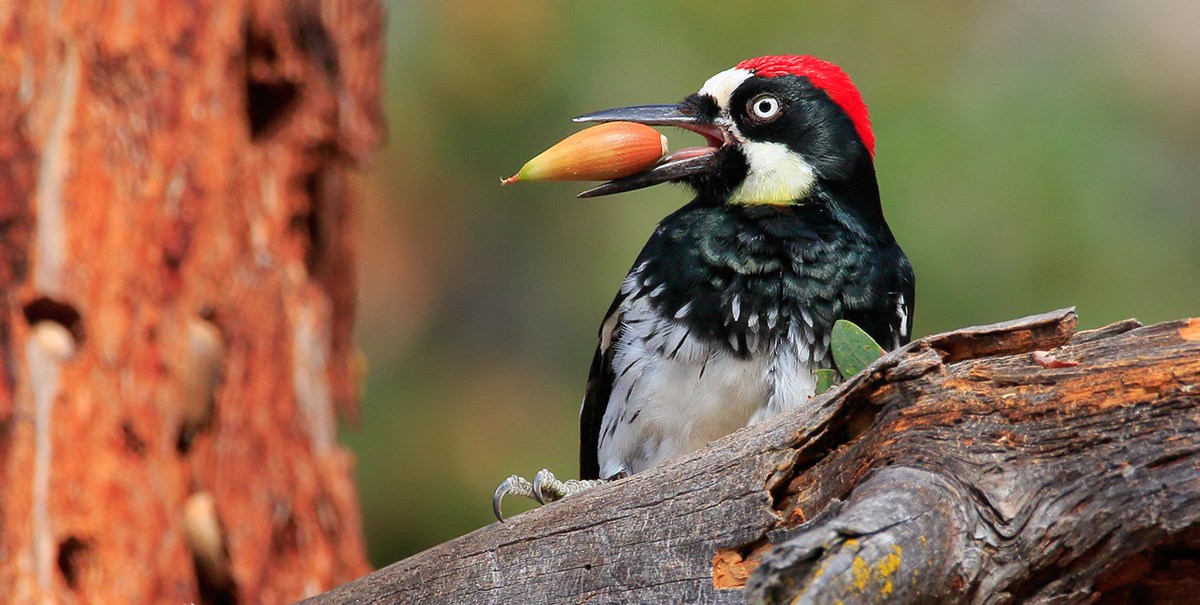Native Woodpeckers in Florida: A Guide to Variety and Behaviors
Native Woodpeckers in Florida: A Guide to Variety and Behaviors
Blog Article
Woodpeckers Unleashed: Exploring the Wonders of These Knowledgeable Tree Mountain Climbers
Woodpeckers, with their unique markings and balanced drumming echoing through wooded areas, hold a distinct area in the bird world. Their specialized composition and adjustments allow them to navigate vertical surfaces with unrivaled ability. Nevertheless, their mastery of tree climbing is just one aspect of their fascinating actions. As we dig right into the complex details of woodpeckers' nesting practices, feeding techniques, and the recurring conservation efforts to protect these amazing birds, a much deeper admiration for their place in nature unfolds.
Makeup and Adaptations
When taking a look at the anatomy and adaptations of woodpeckers, one can observe exceptional attributes that make it possible for these birds to thrive in their specialized eco-friendly particular niche. Woodpeckers are outfitted with a collection of unique anatomical qualities that aid them in their woodpecking habits. One of the most famous functions is their solid, chisel-like beak, which is specialized for drilling into wood to uncover insects or create nesting dental caries. This beak is sustained by solid neck muscular tissues and a very created head framework that works as a shock absorber, permitting woodpeckers to repeatedly peck at trees without causing mind injury. Furthermore, woodpeckers have zygodactyl feet, with 2 toes encountering onward and two encountering in reverse, giving a firm grip on tree trunks while they browse for food or drum for communication.
Furthermore, woodpeckers have an unique tongue framework that is long, barbed, and sticky, allowing them to remove insects from holes in timber. This specialized adjustment enables woodpeckers to exploit a food source that is hard to reach to lots of other bird varieties. Generally, the composition and adjustments of woodpeckers showcase the impressive transformative options that have enabled these birds to thrive in their arboreal environment.
Drumming Behavior
Having explored the makeup and adaptations of woodpeckers, the emphasis now moves to comprehending their drumming behavior, an unique aspect of their interaction and territorial displays. Drumming is an important form of interaction among woodpeckers, serving several purposes such as developing regions, bring in mates, and signaling alarm system. Each woodpecker species has a distinct drumming pattern that aids individuals identify members of their own species and differentiate them from rivals or predators.
Woodpeckers generate drumming sounds by quickly pecking on resonant surfaces such as dead trees, energy posts, or even metal objects, creating a series of balanced beats. The strength and speed of drumming can vary based on the function; for circumstances, a quick drumming sequence may symbolize aggression in the direction of trespassers, while a slower and softer drumming pattern can show courtship (Woodpeckers in Florida). Furthermore, woodpeckers may change the regularity and period of their drumming to share specific messages effectively
Nesting Routines
Exploring the nesting practices of woodpeckers exposes remarkable understandings right into their reproductive behaviors and environment choices. Woodpeckers are known for their distinct nesting preferences, often excavating tooth cavities in trees to produce sheltered areas for increasing their young. These dental caries offer not just as a nesting website yet additionally as a protected haven from killers and severe climate.
Woodpeckers show a high degree of integrity to their nesting websites, usually going back to the very same area time after time. This habits highlights the value of appropriate environment accessibility for their reproductive success. The selection of a nesting site is vital for woodpeckers, with factors such as tree varieties, elevation, and degeneration stage playing significant roles in their decision-making procedure.
Surprisingly, some woodpecker types are known to excavate several cavities within their region, providing themselves with alternative nesting options. This technique may function as a type of insurance against potential threats or disruptions to their main nesting site.

Feeding Methods
Woodpeckers employ a variety of specialized feeding methods to acquire their primary food sources. One of one of the most distinct feeding actions of woodpeckers is drumming, which involves fast pecking on trees to discover pests beneath the bark. This drumming not only helps them find prey but also acts as a way of interaction with other woodpeckers. Woodpeckers have solid, chisel-like beaks that permit them to pierce right into timber easily. When an opening is developed, they utilize their lengthy, barbed tongues to remove insects such as ants, beetles, larvae, and spiders. These tongues are coated with sticky saliva Resources that assists catch the victim. Woodpeckers are additionally recognized to dig deep into tooth cavities in click to read more trees to accessibility surprise insect larvae or sap. Some varieties, like the acorn woodpecker, shop nuts in particularly developed openings called granaries. This tactical keeping of food assists them make it through during food scarcity periods. Woodpeckers are really exceptional in their feeding methods, showcasing versatility and intelligence in procuring their nutrition.
Preservation Initiatives
In the middle of the intricate feeding strategies displayed by woodpeckers, the preservation efforts focused on safeguarding these remarkable birds play a vital duty in protecting their habitats and populaces. Woodpeckers deal with various dangers to their survival, including environment loss because of deforestation, environment modification modifying their ecosystems, and crashes with synthetic structures such as structures and vehicles - Woodpeckers in Florida. Guardians are proactively working to address these challenges and ensure the long-term health of woodpecker types

Education and public awareness projects are likewise vital parts of woodpecker preservation initiatives. By raising awareness regarding the significance of these birds in keeping healthy and balanced forest ecosystems, preservationists can gather support for environment conservation efforts and promote liable land administration practices. With collaborative efforts in between researchers, policymakers, and local neighborhoods, we can interact to secure a future where woodpeckers prosper in their natural habitats.
Verdict

Report this page